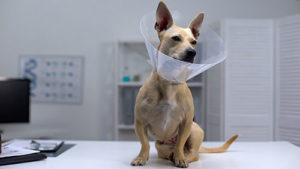5 Misconceptions of Spaying and Neutering That Need to Be Cleared Up
If you own a pet, there’s a good chance you’ve either considered or heard about neutering as an option. While these procedures have many benefits, some pet owners have concerns about potential complications or downsides. These misconceptions of spaying and neutering require discussion, so this article will cover some of the most common negative beliefs and explain the truth of the matter.
Misconception: Animals Must Be Older to be Spayed or Neutered
Many pet owners believe that their animals must be fully grown before considering spaying or neutering. However, both cats and dogs mature much faster than people and become capable of bearing children within the first six months of life. Therefore, spaying or neutering pets while young is a wise decision for new pet owners. Our website is a great place to learn the appropriate age to spay dogs.
Misconception: It’s Too Expensive
While many pet owners are reluctant to pursue spaying or neutering their pets due to budget concerns, the process is far more affordable than you may think. Additionally, because these procedures benefit the entire community, lower-cost or even free clinics provide these services in many communities. Finally, it’s essential to consider the cost of caring for a litter of kittens or puppies, which can be expensive even if it’s for a short time.
Misconception: The Surgery Is Dangerous
We know you care about your animals and would never want to risk your pet’s health. Unfortunately, many pet owners struggle with whether or not to neuter their pets due to the inherent risk of any surgical procedure. However, modern vets conduct these procedures daily, and the medical evidence proves that the operations for neutering male animals as well as to spay females are both extremely safe.
Misconception: My Pet’s Personality Will Change
Every pet has a distinct personality, and the fear of them changing may be what’s causing you to choose not to neuter your pets. Fortunately, these procedures will not impact the personality of your pet whatsoever. While reducing sex hormones may minimize aggression or territorialism, your pet will be the same sweet animal you have always known after the procedure.
Misconception: Spaying or Neutering Can Cause Weight Gain
Another common misconception of spaying or neutering your pets is that the procedures can cause weight gain. However, this belief is unfounded, as spaying or neutering should have no impact on your animal’s weight. While your pet may gain some weight during the recovery due to a lack of exercise, a well-regulated diet and regular exercise will have them back to normal in no time.
Get Started
Now that you’ve heard some of the misconceptions of spaying and neutering and how they can mislead pet owners, it’s time to turn your knowledge into action. At Santa Cruz Veterinary Clinic, we are proud to provide expert spaying and neutering to the pets of Tucson, AZ. Our expert staff can help you understand the process and learn more about dog neutering, so never hesitate to call Santa Cruz Veterinary Clinic at 520-889-9643.

 Owning a pet comes with responsibilities. And vaccination and spaying/neutering are the first and foremost of them.
Owning a pet comes with responsibilities. And vaccination and spaying/neutering are the first and foremost of them. Here are the
Here are the  Pre-Anesthetic Bloodwork
Pre-Anesthetic Bloodwork Your pet’s health is important. In Tucson,
Your pet’s health is important. In Tucson,  Cats are furry little creatures that bring warmth and joy to the heart. For some people, the more, the merrier. For those, having just one to call their own is sufficient. But, regardless of your preference for quantity, cats are animals, and they breed. If you’re someone who wants to enjoy the company of your cat only, look out for unwanted pregnancies.
Cats are furry little creatures that bring warmth and joy to the heart. For some people, the more, the merrier. For those, having just one to call their own is sufficient. But, regardless of your preference for quantity, cats are animals, and they breed. If you’re someone who wants to enjoy the company of your cat only, look out for unwanted pregnancies. TLDR: spaying your dog early on reduces the odds of them de eloping uterine diseases. A reduction in breast tumors also occurs after spaying. Spaying is a process that removes the female reproductive organs. Doing so removes the odds of you having to care for accidental offspring. Spaying only takes a few hours, and you can often get your dog back the same day.
TLDR: spaying your dog early on reduces the odds of them de eloping uterine diseases. A reduction in breast tumors also occurs after spaying. Spaying is a process that removes the female reproductive organs. Doing so removes the odds of you having to care for accidental offspring. Spaying only takes a few hours, and you can often get your dog back the same day. TLDR: to help your dog recover as comfortable as possible after being spayed, you need to do a few key things. Make sure you have enough food and water for your dog so that they will be able to replenish their vital nutrients and fluids. You also want to make sure that your dog has a quiet place that is free of any small children or other pets so that they can recover uninterrupted.
TLDR: to help your dog recover as comfortable as possible after being spayed, you need to do a few key things. Make sure you have enough food and water for your dog so that they will be able to replenish their vital nutrients and fluids. You also want to make sure that your dog has a quiet place that is free of any small children or other pets so that they can recover uninterrupted. TLDR: spaying your female dog will remove her uterus and ovaries, resulting in her inability to have any new babies. Dog owners commonly get their dogs spayed to avoid unexpected pregnancy while also neutralizing their behavior overall. The best age to get your female dog spayed is about four to six months. By spaying your dog at an early age, you will significantly reduce the odds of breast cancer development.
TLDR: spaying your female dog will remove her uterus and ovaries, resulting in her inability to have any new babies. Dog owners commonly get their dogs spayed to avoid unexpected pregnancy while also neutralizing their behavior overall. The best age to get your female dog spayed is about four to six months. By spaying your dog at an early age, you will significantly reduce the odds of breast cancer development. TLDR: Neutering, your male dog, has several benefits, such as reducing the likelihood of developing various canine cancers and prostate disease. Neutering is a reasonably safe process; however, you can expect sharp changes in your dog’s attitude right when you bring them home from the procedure. These side effects can range from increased aggression, depression, anxiety, or even clinginess; however, they only last for a short amount of time.
TLDR: Neutering, your male dog, has several benefits, such as reducing the likelihood of developing various canine cancers and prostate disease. Neutering is a reasonably safe process; however, you can expect sharp changes in your dog’s attitude right when you bring them home from the procedure. These side effects can range from increased aggression, depression, anxiety, or even clinginess; however, they only last for a short amount of time. Copyright © - SantaCruzPet.com
Copyright © - SantaCruzPet.com